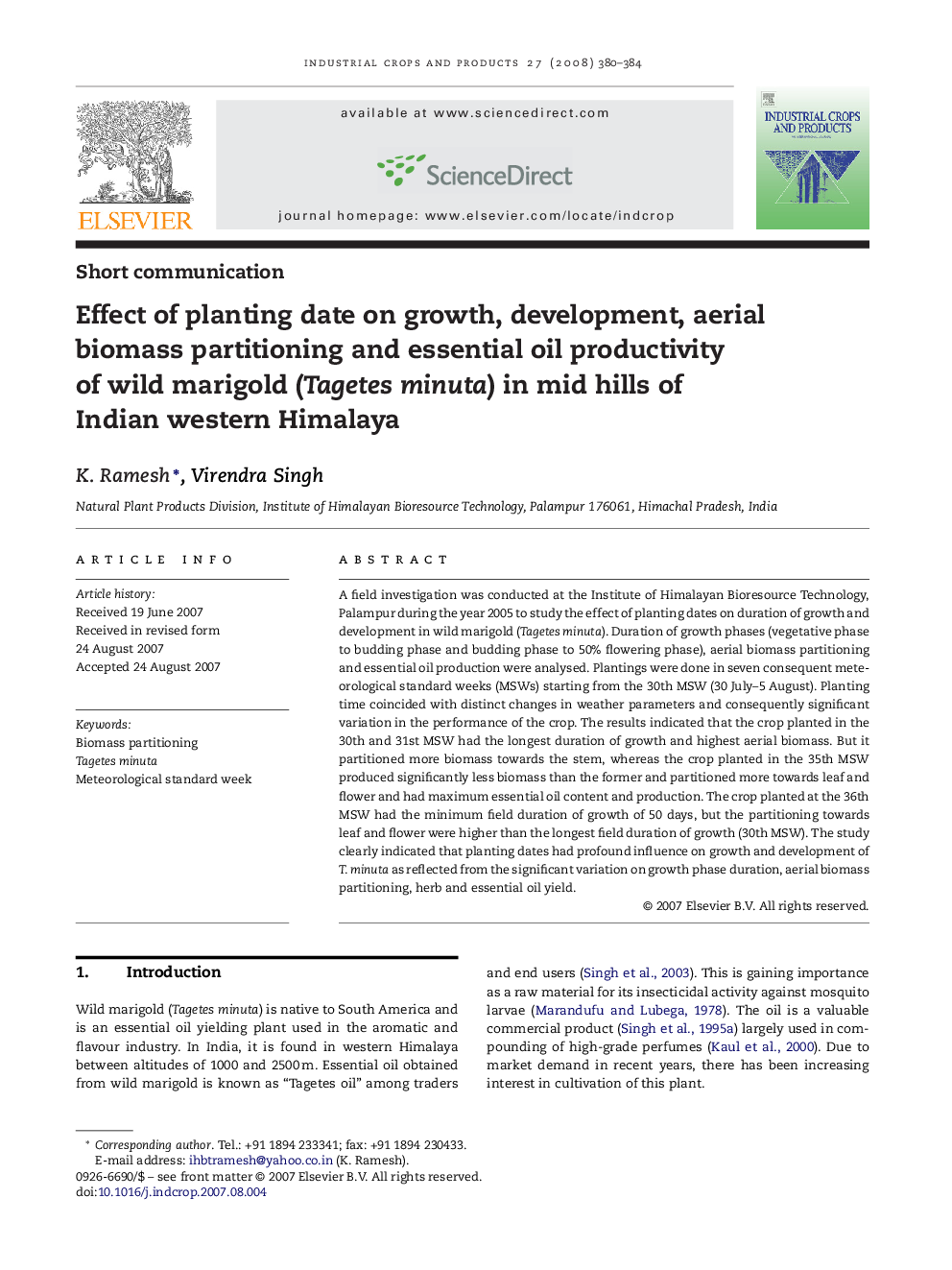| Article ID | Journal | Published Year | Pages | File Type |
|---|---|---|---|---|
| 4515106 | Industrial Crops and Products | 2008 | 5 Pages |
A field investigation was conducted at the Institute of Himalayan Bioresource Technology, Palampur during the year 2005 to study the effect of planting dates on duration of growth and development in wild marigold (Tagetes minuta). Duration of growth phases (vegetative phase to budding phase and budding phase to 50% flowering phase), aerial biomass partitioning and essential oil production were analysed. Plantings were done in seven consequent meteorological standard weeks (MSWs) starting from the 30th MSW (30 July–5 August). Planting time coincided with distinct changes in weather parameters and consequently significant variation in the performance of the crop. The results indicated that the crop planted in the 30th and 31st MSW had the longest duration of growth and highest aerial biomass. But it partitioned more biomass towards the stem, whereas the crop planted in the 35th MSW produced significantly less biomass than the former and partitioned more towards leaf and flower and had maximum essential oil content and production. The crop planted at the 36th MSW had the minimum field duration of growth of 50 days, but the partitioning towards leaf and flower were higher than the longest field duration of growth (30th MSW). The study clearly indicated that planting dates had profound influence on growth and development of T. minuta as reflected from the significant variation on growth phase duration, aerial biomass partitioning, herb and essential oil yield.
